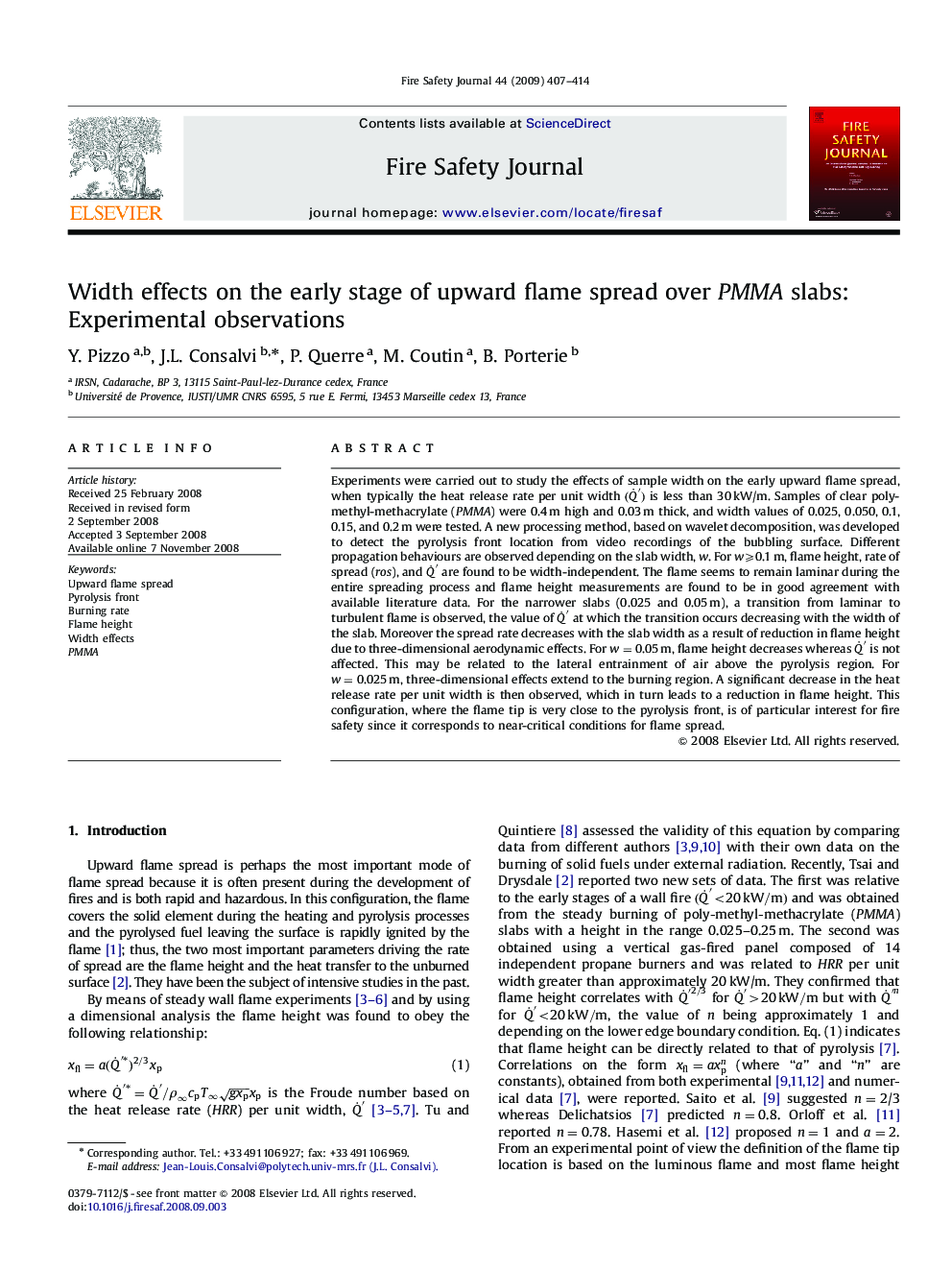| Article ID | Journal | Published Year | Pages | File Type |
|---|---|---|---|---|
| 270308 | Fire Safety Journal | 2009 | 8 Pages |
Experiments were carried out to study the effects of sample width on the early upward flame spread, when typically the heat release rate per unit width (Q˙′) is less than 30 kW/m. Samples of clear poly-methyl-methacrylate (PMMA) were 0.4 m high and 0.03 m thick, and width values of 0.025, 0.050, 0.1, 0.15, and 0.2 m were tested. A new processing method, based on wavelet decomposition, was developed to detect the pyrolysis front location from video recordings of the bubbling surface. Different propagation behaviours are observed depending on the slab width, w. For w⩾0.1 m, flame height, rate of spread (ros ), and Q˙′ are found to be width-independent. The flame seems to remain laminar during the entire spreading process and flame height measurements are found to be in good agreement with available literature data. For the narrower slabs (0.025 and 0.05 m), a transition from laminar to turbulent flame is observed, the value of Q˙′ at which the transition occurs decreasing with the width of the slab. Moreover the spread rate decreases with the slab width as a result of reduction in flame height due to three-dimensional aerodynamic effects. For w=0.05 m, flame height decreases whereas Q˙′ is not affected. This may be related to the lateral entrainment of air above the pyrolysis region. For w=0.025 m, three-dimensional effects extend to the burning region. A significant decrease in the heat release rate per unit width is then observed, which in turn leads to a reduction in flame height. This configuration, where the flame tip is very close to the pyrolysis front, is of particular interest for fire safety since it corresponds to near-critical conditions for flame spread.
